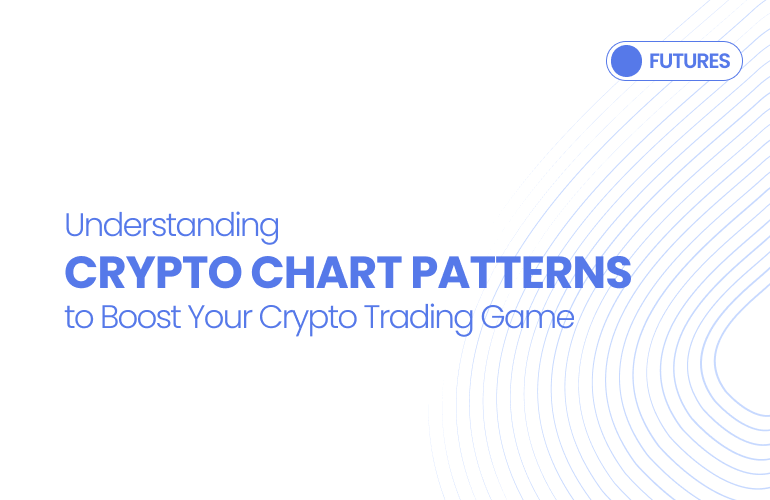Crypto markets move fast, but the price action is not random. Crypto chart patterns compress crowd psychology into shapes you can read on a cryptocurrency chart, helping you time entries, set exits, and manage risk more confidently. In line with Pi42’s data-driven ethos, learning chart patterns for crypto gives you a repeatable framework.
What are Crypto Chart Patterns?
Crypto chart patterns are recurring visual formations that suggest either continuation or reversal of a prevailing trend. They never “predict the future,” but they improve probabilities when confirmed through breakout strength or volume behaviour consistency. Futures-focused guides emphasise that patterns are most useful when anchored to market context: trend direction, nearby support/resistance, and momentum.
Types of Crypto Chart Patterns
Each category signals different market behaviour — whether buyers are gaining strength, sellers are taking control, or prices are consolidating before a major move. Recognising these distinctions helps traders on Pi42 evaluate market sentiment and make better strategies.
Bullish Patterns
When you see a crypto bullish pattern, you’re looking for evidence that buyers are regaining control.
- Double Bottom: Two comparable swing lows separated by a rally. A neckline breakout suggests trend reversal upward; the former neckline often acts as support on a pullback.
- Ascending Triangle: Rising higher lows press against horizontal resistance. Breaks above the ceiling on volume typically signal continuation.
- Cup and Handle: Rounded “cup” followed by a shallow pullback “handle.” A breakout above handle highs signals bullish continuation.
Bearish Patterns
- Head and Shoulders: A peak (head) between two smaller peaks (shoulders). A neckline break often precedes downside continuation.
- Descending Triangle: Lower highs converge into steady support; a confirmed breakdown generally signals bearish continuation in the prevailing trend.
Neutral Patterns
- Symmetrical Triangle: Converging trendlines show indecision. Wait for breakout and confirm via volume or retest. Advanced sources classify this as bilateral—it may break either upward or downward.
How to Use Crypto Chart Patterns in Trading
Learning to identify crypto chart patterns is only half the task. Knowing how to apply them in real trades completes the picture.
Trend Reversals
- Diagnose the prior trend. Reversal setups matter only if a real trend existed first.
- Identify the structure. For example, a double bottom after a prolonged downtrend.
- Seek confirmation. Neckline break with volume, or a successful retest that holds.
- Plan the trade. Entry on break/retest, stop just beyond invalidation, target from the pattern’s measured move.
- Overlay confluence. Add technical indicators like moving averages or RSI to confirm momentum shift rather than replacing the pattern entirely.
Breakouts and Continuations
- Map the consolidation. Ascending triangle, flag, pennant, or symmetrical triangle formations highlight continuation potential depending on volume flow.
- Watch liquidity cues. Rising volume into the break, or open interest dynamics in futures.
- Execute with rules. Breakout buy, retest buy, or stop orders just beyond the boundary.
- Manage risk. Trail stops beneath higher lows (bullish) or above lower highs (bearish).
- Mind catalysts. Major news can invalidate even textbook crypto chart patterns.
Tip for Candlestick pattern for crypto traders: blend micro signals (e.g., hammer at support within a double bottom) with the macro shape to improve timing.
Common Mistakes to Avoid in Chart Pattern Analysis
Even experienced traders can misinterpret cryptocurrency chart analysis when they rely too heavily on one pattern or overlook market context. Recognising these pitfalls early can prevent avoidable losses.
Over-relying on a single chart pattern
Patterns are probabilistic. Treat them as one layer in a stack that also includes trend, liquidity, and risk. Multiple confluences > single signal.
Ignoring larger market trends or context
A bullish continuation pattern inside a higher-timeframe downtrend has lower odds. Start top-down, then refine. Futures-focused references stress classifying patterns into continuation/reversal and aligning with the broader move.
Not applying risk management strategies
Every trade needs defined invalidation, position sizing, and scenario planning. Without these, even “perfect” crypto chart patterns can harm P&L when volatility spikes.
Pi42 Can Help
- Trade in INR, avoid stablecoin detours: Pi42 offers India’s first Crypto-INR perpetual futures venue, letting you margin and settle in INR—no USDT conversions. That simplifies accounting and reduces extra conversion risk.
- Compliance and transparency: FIU-aligned operations, Indian bank custody for INR balances, and a clear, competitive fee approach help active traders focus on execution.
- Now with INR-margined options: Trade BTC/ETH options in INR, using smaller entry costs and multiple expiries—apply chart-pattern insights to design calls/puts or spreads.
If you’re exploring how to trade in cryptocurrency using patterns, Pi42’s INR-margined futures and options give you native market access with fewer moving parts.
Practical Bridge: From Patterns to Options (Bonus for Options-Curious Traders)
Your knowledge of crypto chart patterns translates directly into options trading strategies:
- Reversal pattern (Double Bottom): Consider bullish call spreads after confirmation to cap risk while participating in upside.
- Continuation pattern (Ascending Triangle): Breakout expectations can be expressed with debit calls or conservative put credit spreads (bullish theta-positive).
- Neutral pattern (Symmetrical Triangle): If you anticipate a volatility expansion but not the direction, long straddles/strangles may fit. Manage Greeks around the event and be disciplined with exits as the move unfolds.
Putting It All Together
By treating crypto chart patterns as a structured decision tool—not a prediction—you gain practical edge. Combine with robust risk rules, liquidity awareness, and smart instruments to transform charts into clear, executable trade plans.
Deepen Your Crypto Insights
What Are Perpetual Futures Contracts and How Do They Work?
Short Selling vs Margin Trading – Key Differences
What is High Frequency Crypto Trading? Crypto Trading 101

